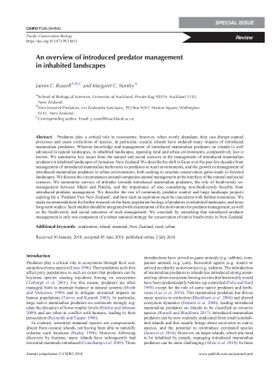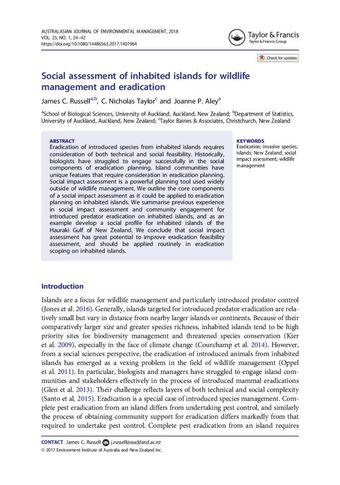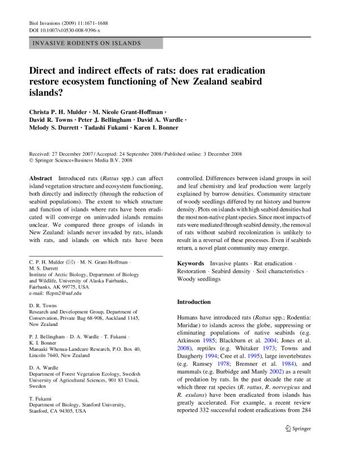An overview of introduced predator management in inhabited landscapes
- Description:
- Predators play a critical role in ecosystems; however, when overly abundant, they can disrupt natural processes and cause extinctions of species. In particular, oceanic islands have endured many impacts of introduced mammalian predators. Whereas knowledge and management of introduced mammalian predators on islands is well advanced in natural landscapes, in inhabited landscapes, spanning rural and urban environments, comparatively less is known. We summarise key issues from the natural and social sciences in the management of introduced mammalian predators in inhabited landscapes of AotearoaNew Zealand. We describe the shift in focus over the past few decades from management of introduced mammalian herbivores to predators in rural environments, and the growth in management of introduced mammalian predators in urban environments, both seeking to emulate conservation gains made in forested landscapes. We discuss the circumstances around companion animal management at the interface of the natural and social sciences. We summarise surveys of attitudes towards introduced mammalian predators, the role of biodiversity comanagement between Ma¯ori and Pakeha, and the importance of also considering non-biodiversity benefits from introduced predator management. We describe the rise of community predator control and large landscape projects aspiring for a Predator Free New Zealand, and how such an aspiration must be concurrent with habitat restoration. We make recommendations for further research on the basic population biology of predators in inhabited landscapes, and more long-term studies. Such studies should be integrated with examination of the motivations for predator management, as well as the biodiversity and social outcomes of such management. We conclude by remarking that introduced predator management is only one component of a robust national strategy for conservation of native biodiversity in New Zealand.
- Display date:
- 2017
- Collections:
- Secretariat of the Pacific Regional Environment Programme (SPREP)
- Publisher:
- Taylor & Francis
- Content partner:
- Secretariat of the Pacific Regional Environment Programme (SPREP)
- Availability:
- Not specified
-
Copyright status: All rights reservedFind out more about what you are able to do with this itemThis item is all rights reserved, with means you'll have to get permission from Secretariat of the Pacific Regional Environment Programme (SPREP) before using it. For more information, please see our use and reuse page.What can I do with this item?Non-infringing useNZ copyright law does not prevent every use of a copyright work, and this item may be hosted by an international institute or organisation. You should consider what you can and cannot do with a copyright work.No sharingYou may not copy and/or share this item with others without further permission. This includes posting it on your blog, using it in a presentation, or any other public use.No modifyingYou are not allowed to adapt or remix this item into any other works.No commercial useYou may not use this item commercially.
Related items
Welcome and warm Pasifik greetings
The information on this site has been gathered from our content partners.
The names, terms, and labels that we present on the site may contain images or voices of deceased persons and may also reflect the bias, norms, and perspective of the period of time in which they were created. We accept that these may not be appropriate today.
If you have any concerns or questions about an item, please contact us.



